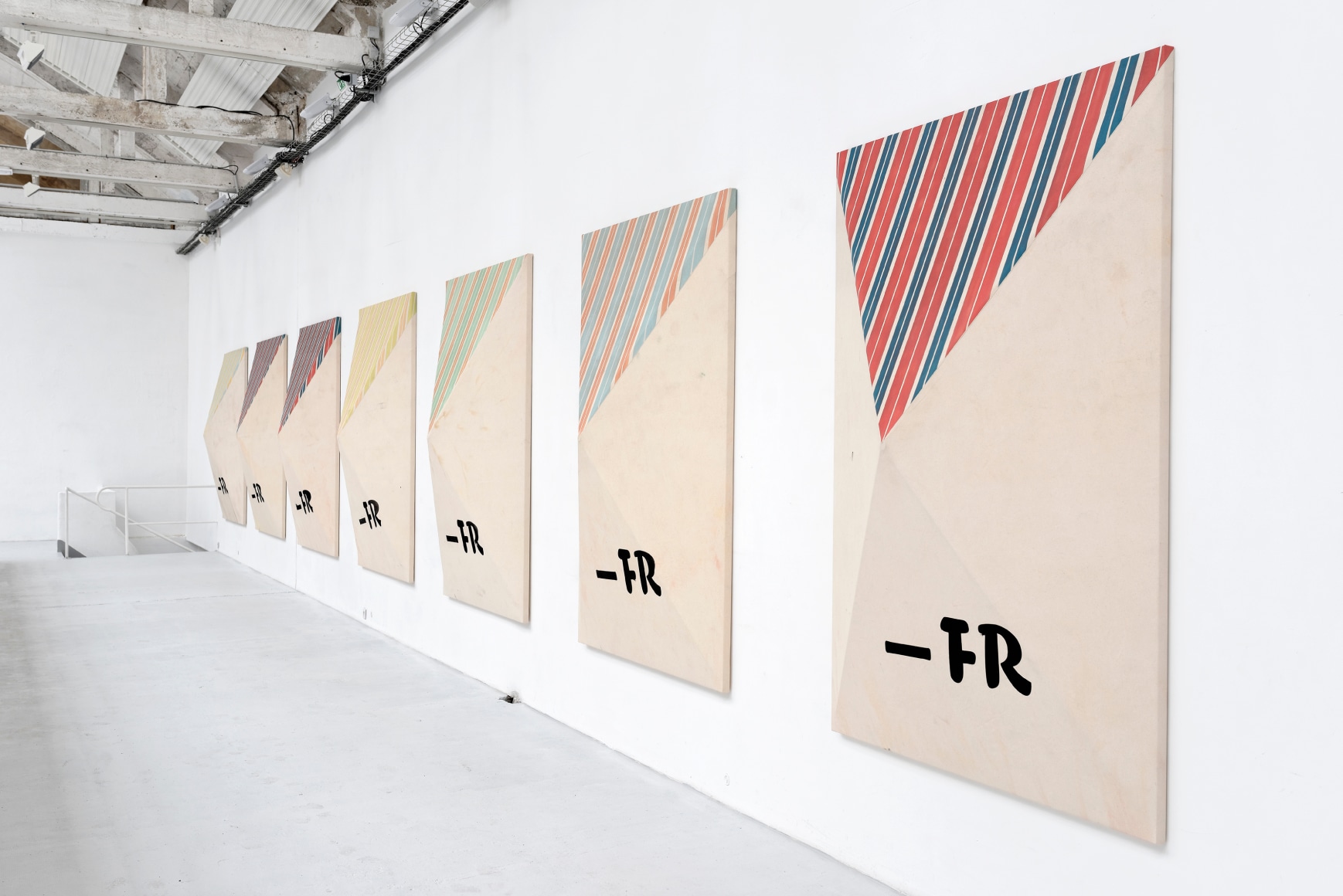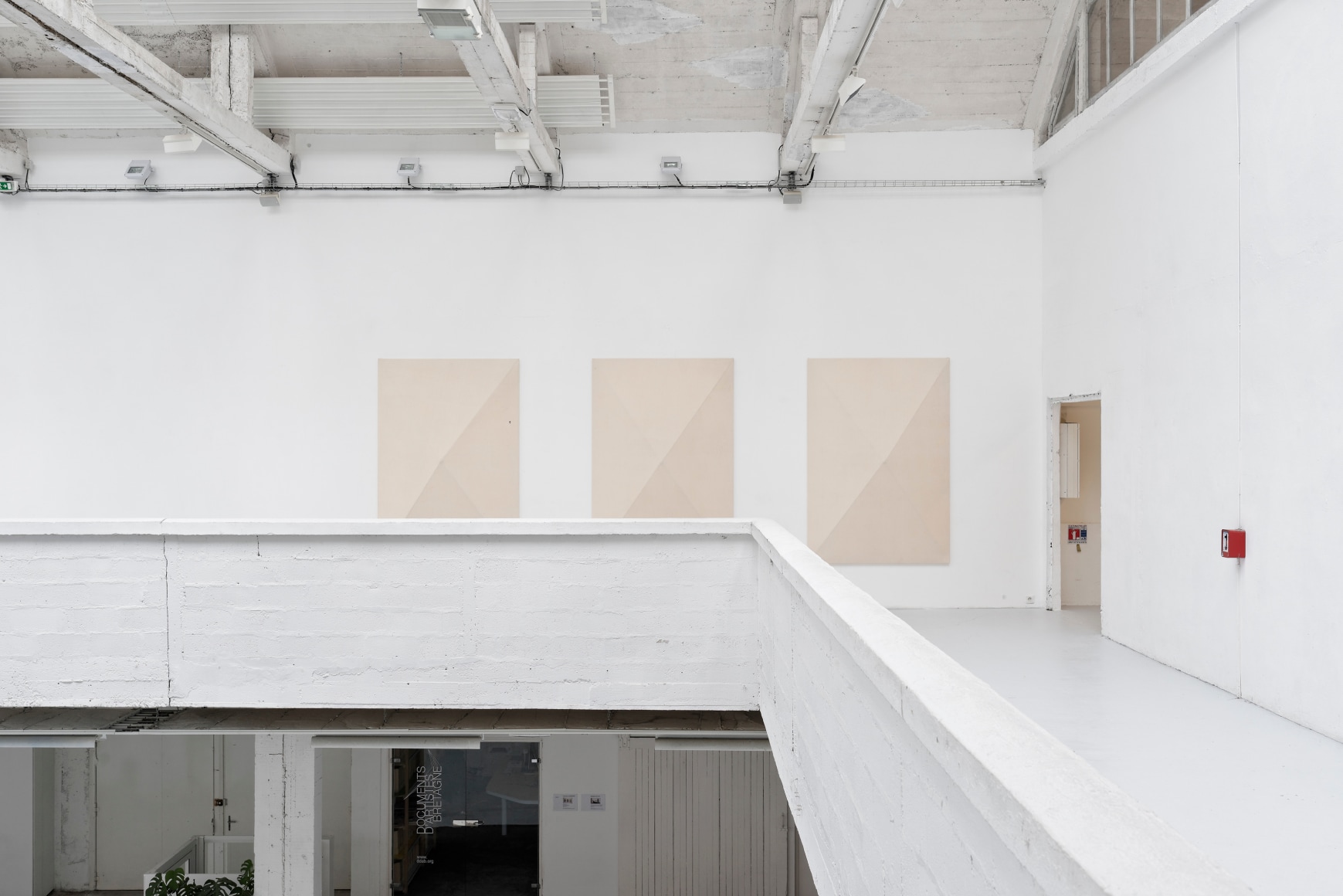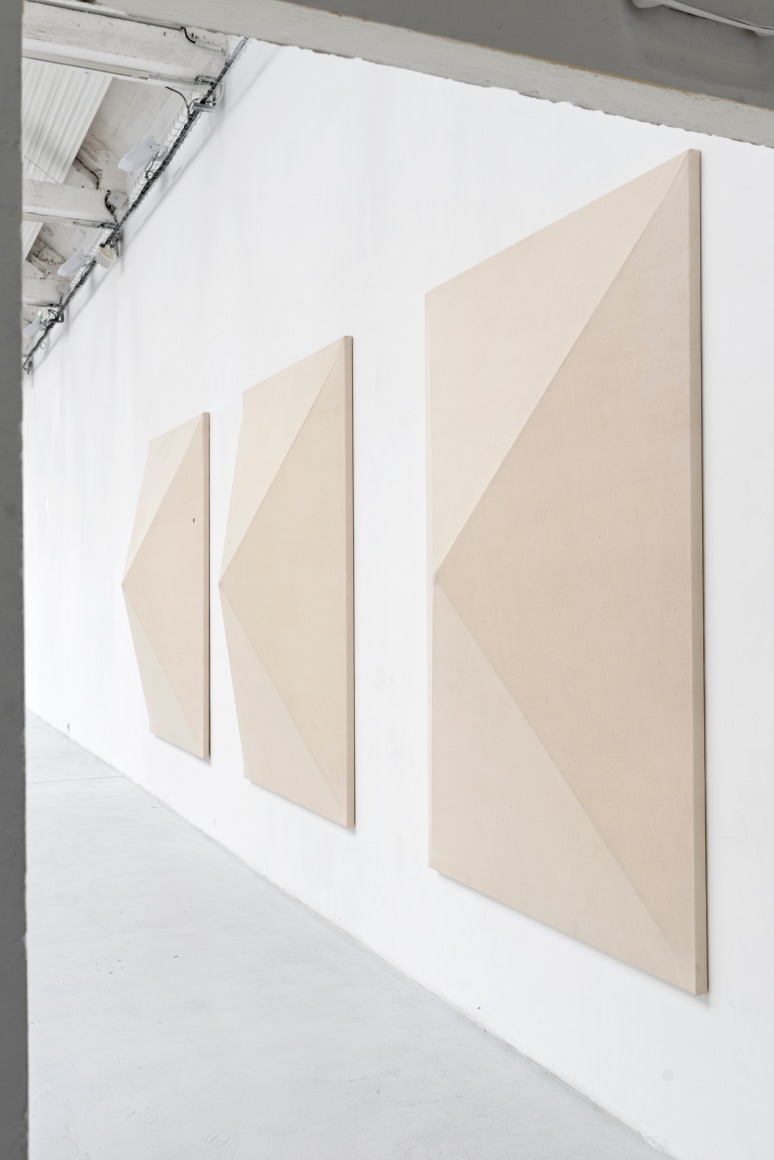For his first institutional exhibition Norwegian artist Fredrik Værslev will present a group of new paintings combining patterns and creation processes from three different series. The artist will show pyramidal shaped-canvases on which stripes from the Canopy series reappear amongst white marks left by a line-tracer and ready-made logos appropriated from the graphic identity of the art center Passerelle. This is a strategy Fredrik Værslev previously employed on various occasions, creating a very literal link to the context of the exhibition.
Another act of appropriation is the title of the show: “Querelle of Brest”. One could be tempted to apply gender theory via Jean Genet and Rainer W. Fassbinder, or perhaps he’s simply pointing to an interest in the city of Brest and its cultural heritage, but that would be to fall into the artist’s trap. On closer inspection the repetitive, obsessional and radical aspect of the whole series points to something more treacherous, a dead-end even. This doesn't exclude the fact that the boundaries of subjectivity (but resolutely not of intimacy) are obviously at stake in Fredrik Værslev's works.
The reflexive use of such a resonant title (the word “Brest” and the letters “-FR” standing for France in various communication tools of the art center) does not preclude the telling or recollection of fictitious stories. Myriad hypotheses could be put forward about the influences of the immediate visual surroundings of the artist or his approximate and fantastical idea of a certain location. According to the Værslev, however, words are only as signs, purely pictorial or decorative elements. The potential meaning of those words and their associations, which seem at first to be the most intelligible part, soon collapse and give way to abstraction in its broadest sense. Here we could potentially start another quarrel, not regarding ambiguity, but regarding where abstraction begins or ends.
French philosopher Hubert Damisch proposes a definition of abstraction that particularly suits the manifold aspects of these paintings, their genre and their three-dimensional surface as well as their strategy of appropriation: ‘Even from a strictly historical point of view, no matter whether the historical perspective turns into a narrative as such, we would have to agree that the problematic of abstraction, considered as an operative mode or as a thought-process, totally surpasses the restricted area allowed to abstract art in the program of modernity, to say nothing of the temporal as well as the conceptual limits, thus relegating it to the status of a “genre.” Abstraction, in the broader sense, is something that goes upstream far beyond the medieval period and the so-called dispute of the “universals,” up to what is conventionally regarded as the Greek origins of Western thought, which by the way coincide temporally with the origin of geometry.’ ¹
This leads us back to painting and to the way Fredrik Værslev's practice embodies a will to map or define a new space for painting, somewhere between the real, imaginary and virtual spaces. Painting, however, remains a receptacle for representation whose index is somehow distorted or biased, playing with the ambivalent superimposition of different registers from geometrical abstraction’s rhetoric to communication theory. The works can be one thing and the obverse at the same time; this is probably why we would call them “contemporary”.
Returning to cinema and to the playful use of film titles (Fredrik Værslev regularly bases his titles on films), his works are literally “Two-Lane Blacktop” ² paintings, two-lane roads where you can drive side by side, race and win, lose or die. Monte Hellman's film title comes, prosaically, from the name of the type of the road whilst at the same time alerting us to how a synthesis of his vision with that of the American landscape leads us towards a new understanding of what the images can be about. Similarly, Fredrik Værslev's paintings appear, initially, to not represent anything outside themselves, but like the existentialist message of the road movie, they cross the void beyond the volume at the heart of their abstraction.
(Source)









